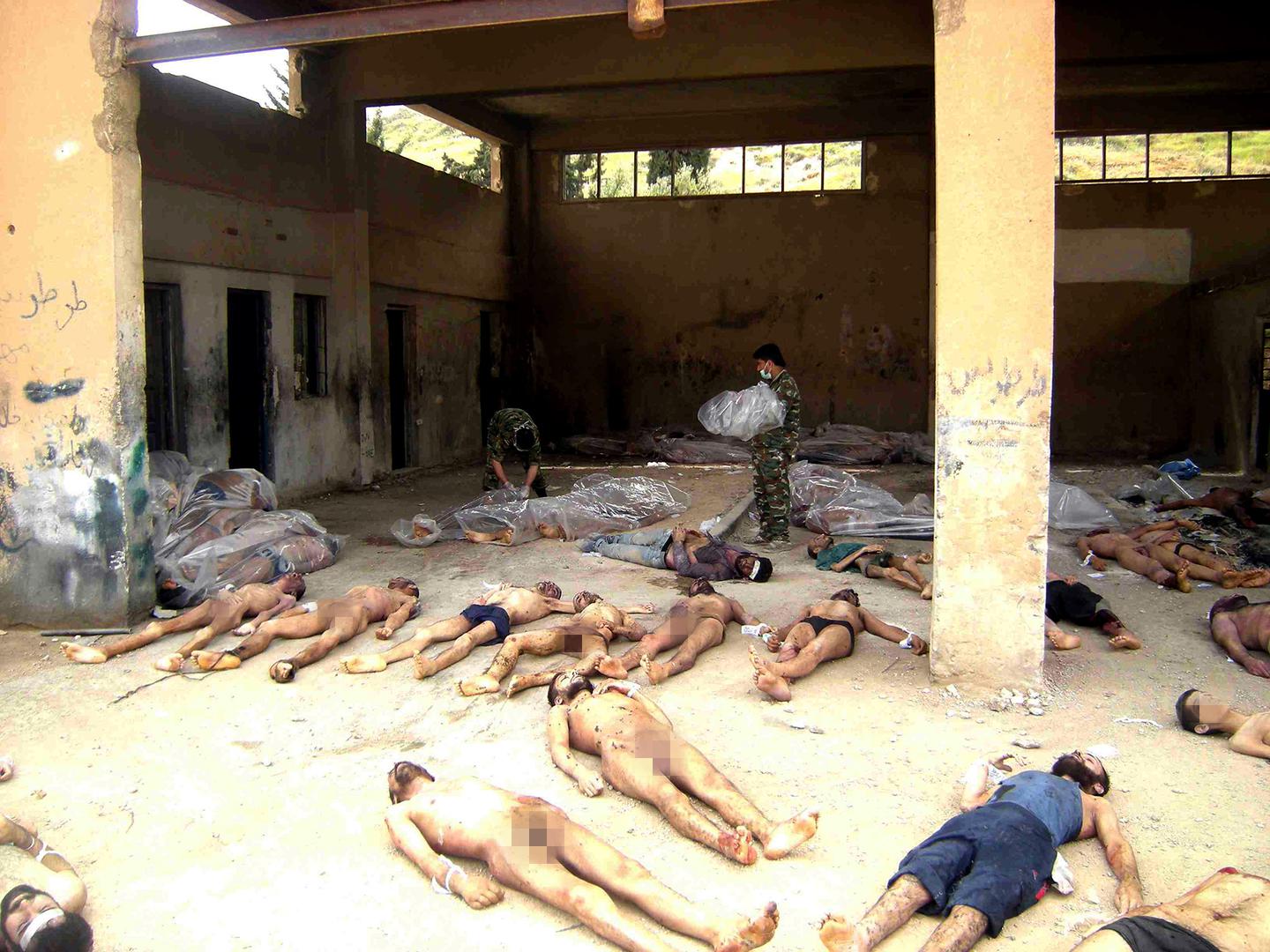Syrian State Atrocities
"I have never in my life seen pictures of bodies that were subjected to such criminality, except when I saw the pictures of the Nazi regime."
"My work ethic, my morals, my religion did not allow me to be quiet."
"We wanted to get these photos out so that the dead people's families would know that their loved ones had passed away. People had to know what was going on in the prisons and detention centres."
Caesar, Syrian army defector
"We have meticulously verified dozens of stories and we are confident the Caesar photographs present authentic and damning evidence of crimes against humanity in Syria."
"Just about every detainee in these photographs was someone’s beloved child, husband, father, or friend, and his friends and family spent months or years searching for him."
"These photographs represent just a fraction of people who have died while in Syrian government custody -- thousands more are suffering the same fate."
Nadim Houry, deputy Middle East director, Human Rights Watch

In 2013, a Syrian military defector smuggled thousands of digitized photographs out of Syria and handed them over to Syrian rebels. His actual name withheld for fear of reprisals, Caesar worked for the regime as a crime scene photographer with the Syrian military police; once the civil war began he was directed to take photographs of detainees who died, comprising a record maintenance effort with striking similarities to the precision note-keeping of the genocidal Third Reich.
Caesar managed to take photographs, almost seven thousand of them, of Syrian pro-democracy activists, student demonstrators and roughly one hundred boys taken into custody, tortured by military intelligence between 2011 and 2013 and never again seen by their families. The Syrian state security machine's focus and actions bears strong resemblance to yet another world-class terror machine, the Islamic State of Iraq and the Levant which alternately proudly bares through social media its triumphant atrocities.
Caesar documented through the lens of his camera prisoners' torture; from broken teeth to gouged-out eyeballs, burns and lashing marks caused by car battery jumper cables. Physicians for Human Rights experts analyzed a portion of the photographs discovering "evidence of violent blunt force trauma, suffocation, starvation", along with gunshot wounds. "Many of the photographs show emaciated bodies as well as marks of torture."

Caesar copied images to portable USB sticks, hiding them in the heel of his shoe or shoved into his belt until such time that he was able to give them for safekeeping to a friend who aided him. Defecting in August 2013, Caesar took with him over 53,000 images. Finally handing them over to the Syrian National Movement. They were shared with human rights investigators and viewed by the UN Security Council.
Russia, needless to say, sits on the permanent Security Council, and will have had ample opportunity to view the evidence of the Syrian regime's vicious depravity. But Moscow has decided to support Syria's Bashar al-Assad. They have not only continued to fly air missions bombing the rebel camps, but the bombing of towns and villages indiscriminately as well, causing countless civilian casualties.
And those Syrians who have been maimed by Russian bombs will find it difficult to obtain medical care, since Russian bombs have also targeted and destroyed 20 Syrian hospitals.
One university engineering student activist who had aided civilians to escape from Homs was a arrested by a military police unit. Her family paid over $18,000 to Syrian officials for her release. Then they were informed she had died of a "stroke". Later informed she was still alive, they paid $90,00 that a military officer demanded for her release.
The family was informed she was in Lebanon. But one of the pictures Caesar had was a photograph of Rehab al-Allawi, 25, "215 Branch" stuck on her forehead, identifying a military intelligence unit known as the "Branch of death".

Labels: Atrocities, Conflict, Rebels, Syria

<< Home